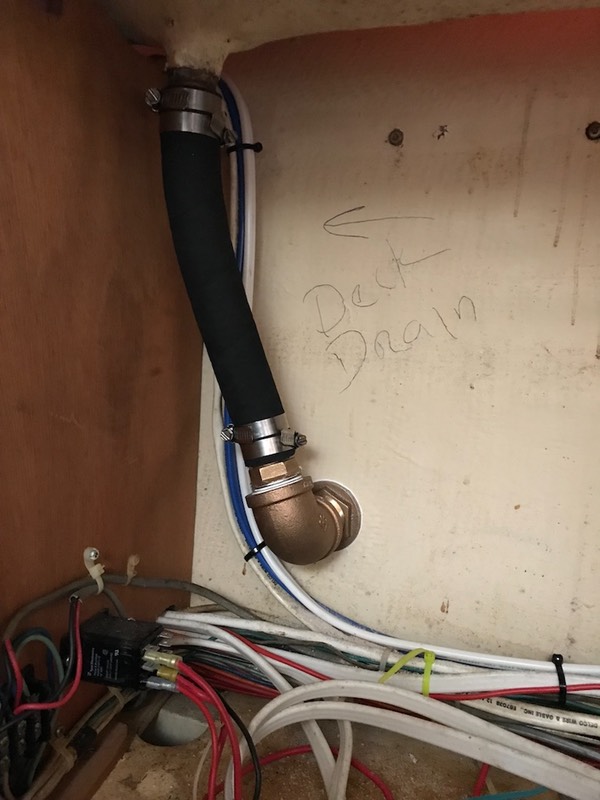Red Ranger uses "raw" water for a number of things: flushing the forward head, rinsing in the galley sink, cooling the engine, washing down the anchor. Once upon a time, it also had air conditioners, a fridge, and an aft head that used raw water also.
All of the raw water comes through a single intake called a sea chest. It's box with a hose that leads through a hole in the bottom of the boat and a bunch of hoses leading various places around Red Ranger.
When I removed the aft head, the water-cooled fridge, and the A/C, I capped the hoses. This means putting in a hose barb-to-threaded pipe adapter and a cap on the threaded part.
However.
That's four separate hose clamps to inspect each year. And it's just a hose full of raw water laying around in the bilge. Which leads to this:
"Why is this hose here?"
"Because it's a right pain in the ass to shut off the water intake, disconnect it from the sea chest, and cap it properly."

We're out of the water right now, so closing the valve is academic. And the consequences of a mistake are negligible.
The gray rectangle is the top of the sea chest — it's a piece of acrylic that lets us see the state of the water flow.

Here's the bonus fitting we replaced. It's a valve with an elbow, a fitting to change from ½" pipe to ¾" hose threads and a cap.
We can attach a hose to this and use dock water instead of raw water. It's a way to flush the engine. More importantly, we can use this to put anti-freeze into the water box and fill the various systems for storage over the winter.
The previous version of this fitting had a valve handle that was rusting from exposure to salt water down there.
And you can see the clutter of hoses in the background of the picture. It's a busy place.
Still to do?

Final work on the through-hull changes. Here's what's been done so far…
The original scupper drains ran down to a through-hull fitting below the water line. Very clean. Also. A very long run of difficult to maintain hose. With a 90° turn that never seemed to drain well in heavy rains. At the bottom was a through-hull fitting, all of which are potential problems.
Here's the new design.
About a foot of hose and it drains through the upper part of the hull. This will develop a rusty weeping stain on the side of the boat.
But.
We can access it, repair it. and clean it out when it's backed up with leaf litter.
We can even add a valve between the bronze part and the hose in the unlikely event of hose failure while we're heeled over.
The port-side drains were much more complex. A hose went from the deck scupper to a T-fitting shared with the port cockpit drain (and the aft head sink.) Seriously. Three drains with various T's and hose clamps.

Worse: the port side T-fitting broke and leaked into the engine room. We're excited to have the port drains simplified.
Here's the starboard drain. It's a robust bronze fitting. It will develop a weeping stain that we will have to wash and wax.
Forward of the fitting you can see blue scuff marks from a fender we used to use until it started leaving vinyl on the hull. The port side is worse. We have a lot of cosmetic work to do.
You can see the reflection of the neighbor's boat. So the wax I put on four or so years ago is holding up pretty well.
We also replaced the old through-hull fitting that was part of the air conditioning we removed. We're waiting for the plastics guy to fill the two holes with solid FRP plugs, glass over, prepare, and paint the openings. All of that requires a stretch of warm weather.
Then we can look at the fuel pump drip. But that's another weekend on Red Ranger.

